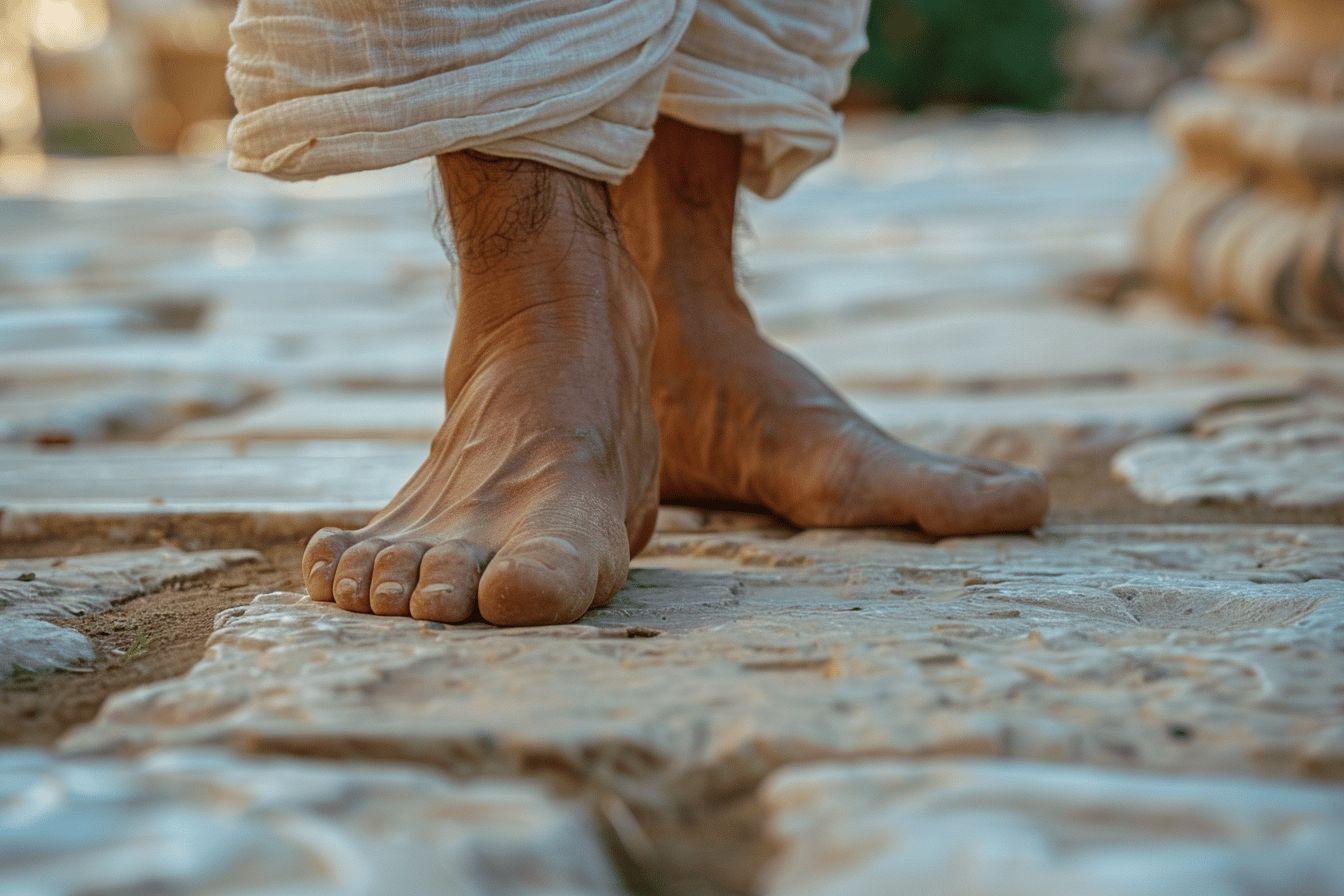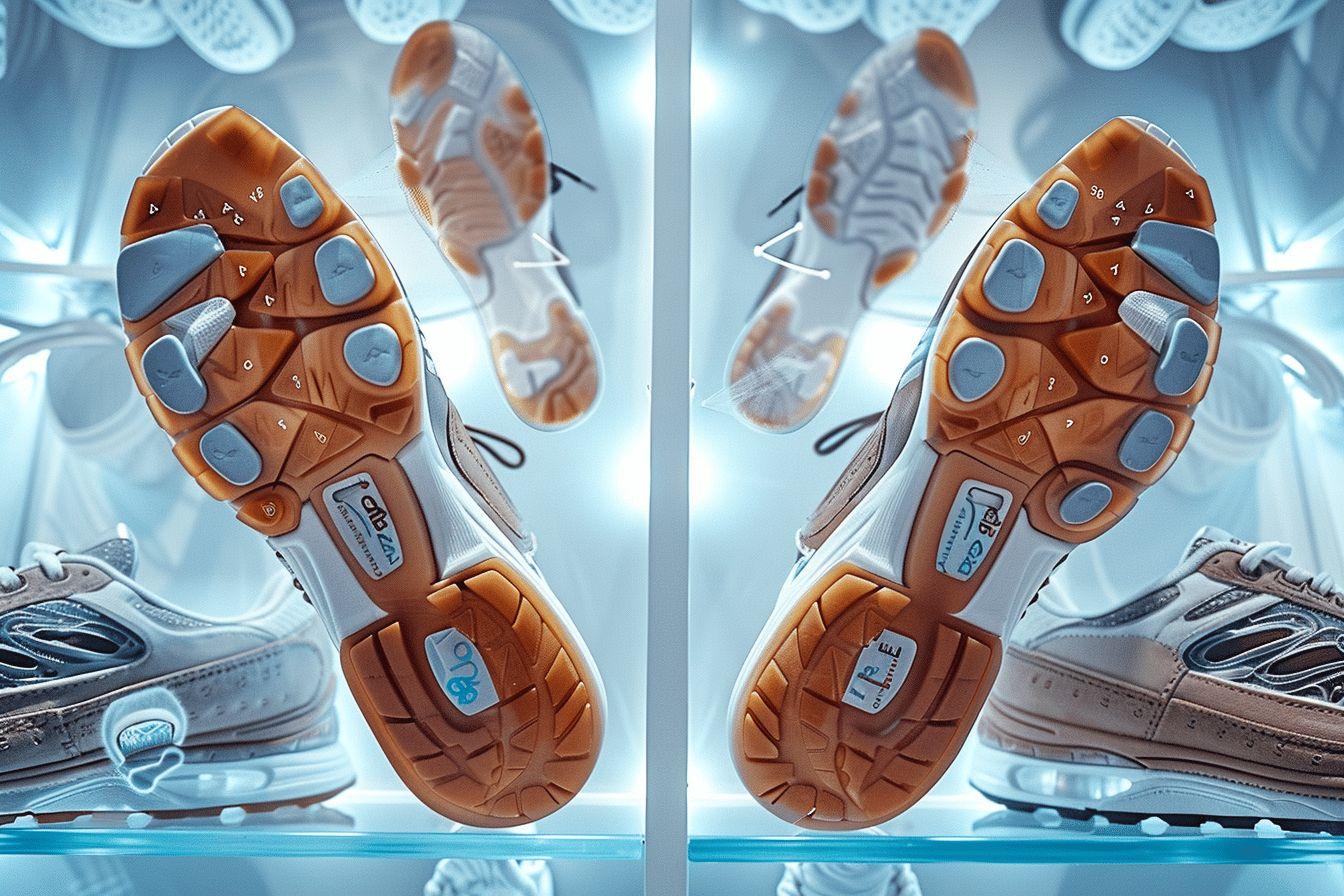Summary
Greek feet, characterized by a longer second toe, represent a unique anatomical variation with genetic and health significance.
- Historical significance : Named after ancient Greek statues, affecting 20-30% of the global population and once considered an aesthetic ideal.
- Anatomical basis : Results from a shorter first metatarsal bone than second metatarsal, creating the distinctive toe alignment.
- Geographic distribution : Highest prevalence in Northern European populations (25-30%), with varying rates worldwide.
- Health implications : May contribute to increased risk of plantar fasciitis, metatarsalgia, bunions and other foot conditions.
- Management approaches : Proper footwear with wider toe boxes, foot exercises, and regular podiatric assessments can help prevent complications.
Greek feet, a distinctive foot shape where the second toe is longer than the big toe, carries both ancestral markers and potential health implications. This anatomical variation, also known as Morton's toe, affects approximately 20-30% of the global population and has fascinated researchers and anthropologists for centuries. Understanding this unique foot structure provides insights into genetic heritage and possible predispositions to certain foot conditions.
Understanding greek feet anatomy and origins
The term "greek feet" derives from ancient Greek statues that frequently depicted this distinctive toe alignment. In classical Greek sculptures, particularly those from the Hellenistic period, figures often displayed a longer second toe as an aesthetic ideal. This anatomical feature was considered a mark of nobility and physical perfection in ancient Greece.
The defining characteristic of Greek feet is the second toe extending beyond the hallux (big toe), creating a distinctive profile when viewed from above. This contrasts with the more common "Egyptian foot" where the big toe is longest, or the "Roman foot" where all toes appear nearly equal in length.
Anatomically, this variation results from the relative lengths of the first and second metatarsal bones in the foot. In people with Greek feet, the first metatarsal is shorter than the second, causing the second toe to protrude further. This skeletal arrangement is determined primarily by genetic factors and is typically present from birth.
The distribution of Greek feet varies significantly across different populations and geographical regions:
- Highest prevalence in Northern European populations (25-30%)
- Moderate frequency in Mediterranean regions (15-20%)
- Lower occurrence in Asian populations (10-15%)
- Varying prevalence among African populations (12-22%)
This distinctive toe pattern can serve as a subtle marker of ancestral heritage, with family lines often showing consistent inheritance of this trait across generations. Geneticists have identified several genes associated with metatarsal development that may contribute to this unique foot structure.

Health implications and potential foot issues
While Greek feet are a normal anatomical variation, this foot structure can sometimes contribute to specific health concerns. The altered biomechanics of walking and standing with Greek feet may lead to increased pressure on certain parts of the foot.
One common issue is plantar fasciitis symptoms, which can develop more frequently in people with Greek feet. The plantar fascia—the thick band of tissue connecting the heel to the toes—may experience different tension patterns due to the altered foot structure. Morning pain and stiffness in the heel area often signal this condition.
People with Greek feet may also experience:
Increased susceptibility to forefoot pain due to weight distribution shifting toward the front of the foot. This can manifest as metatarsalgia, a condition characterized by pain and inflammation in the ball of the foot.
Higher risk of developing bunions (hallux valgus) as the shorter first metatarsal may create greater instability in the first toe joint. This structural difference can cause the big toe to gradually drift toward the other toes, especially when wearing narrow footwear.
Some individuals with Greek feet find relief through reflexology techniques for foot pain, which target specific pressure points to address discomfort and improve overall foot function.
The following table illustrates common foot conditions associated with Greek feet and their prevalence:
| Foot Condition | Prevalence in Greek Feet | Prevalence in Other Foot Types |
|---|---|---|
| Metatarsalgia | 22-28% | 10-15% |
| Bunions | 18-25% | 12-18% |
| Plantar Fasciitis | 15-20% | 10-12% |
| Morton's Neuroma | 8-12% | 3-6% |
Adapting footwear and lifestyle for comfort
For individuals with Greek feet, proper footwear selection plays a crucial role in preventing discomfort and potential foot problems. The unique structure of Greek feet requires specific considerations when choosing shoes for everyday wear and physical activities.
The ideal footwear for Greek feet should feature a wider toe box that accommodates the protruding second toe without compression. Shoes with adequate arch support help distribute weight more evenly across the foot, reducing pressure on the forefoot where Greek feet typically bear more weight.
When symptoms of foot discomfort develop, understanding recovery indicators for foot conditions becomes essential. Monitoring improvements in pain levels and mobility can help track progress and guide treatment adjustments.
Lifestyle modifications that benefit those with Greek feet include:
- Regular stretching exercises targeting the toes, arch, and calf muscles
- Foot strengthening activities such as toe curls and marble pickups
- Periodic foot soaks to relieve tension and improve circulation
- Proper nail care to prevent ingrown toenails, which can be more common with the longer second toe
For those experiencing persistent discomfort, exploring effective treatment options for foot pain can provide significant relief. Custom orthotics designed specifically for Greek feet can address biomechanical issues by providing targeted support where needed most.
Regular foot assessments by podiatrists are particularly valuable for people with Greek feet, as early intervention for developing issues can prevent more serious complications. Professional evaluation can identify specific pressure points and gait abnormalities that might contribute to discomfort.
By understanding the unique characteristics of Greek feet and taking proactive measures to accommodate this natural variation, individuals can maintain healthy, comfortable feet throughout their lives while honoring this distinctive aspect of their genetic heritage.




Leave a comment
This site is protected by hCaptcha and the hCaptcha Privacy Policy and Terms of Service apply.